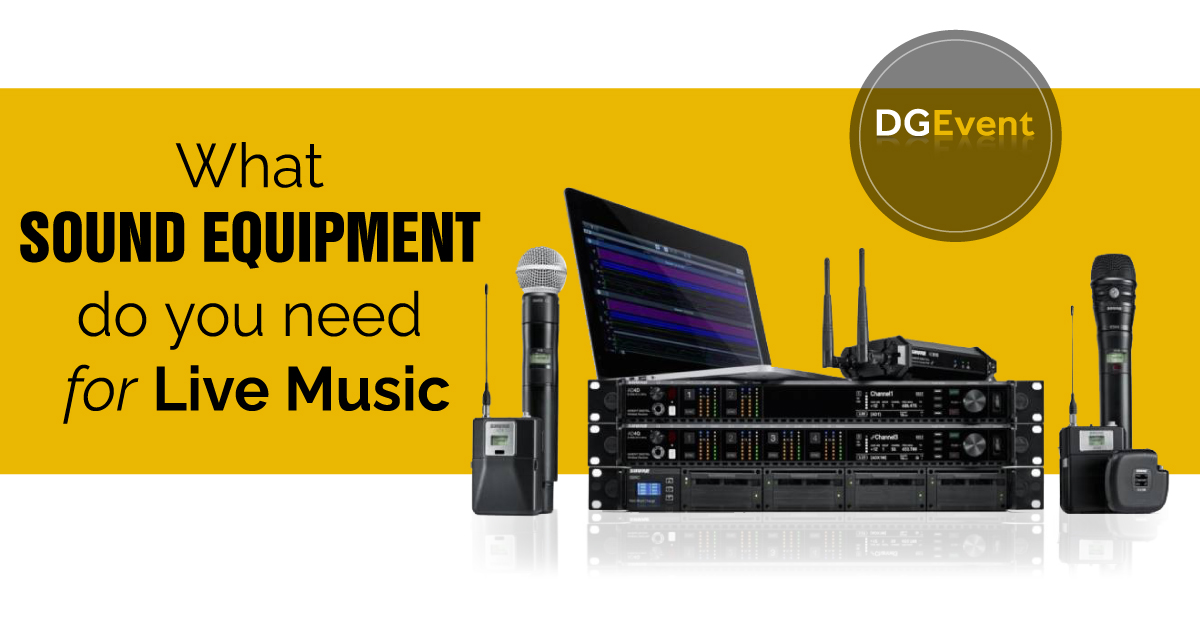It’s essential to consider a variety of strategic and technological factors while putting up a sound system for a small band hoping to play to an audience of 300 to 500 people. For the first time in history, a wide variety of sound reinforcement equipment and techniques are available to audio technicians. Let’s take a look at a few of the available technologies and solutions to help alleviate some of the confusion.
Power Amplifier
To drive (or power) loudspeakers, an electronic audio signal must be amplified using electricity. The “wattage” of a Power Amp depends on the speaker’s “ohms” rating. The amp’s wattage output tells you how much amplification it can produce. The level of resistance to the speaker’s power is measured in Ohms. The higher the Ohm, the more watts are available. Before selecting an amplifier, it is critical to know the speaker’s Ohms level. You can contact a good PA system on rent in Faridabad to rent one.
Loudspeakers
These are the parts of the PA system that we’ve all heard of before. A PA system’s loudspeakers are the physical devices that produce the sound. They’re the product of the final mix, the EQ, and the amplifying process. They can either be passive (requiring a signal from an amplifier or a power mixer) or active (requiring a signal from a separate amplifier or power mixer) (they have their plugs and need their outlets). PA system rental service Faridabad will give you the best sound equipment you need. For your concert.
Monitors
Members of the band can hear themselves and each other thanks to small loudspeakers focused directly on them.
Mixer
This component can connect multiple instruments or inputs to a loudspeaker system. The mixer allows you to adjust the loudness of each input signal independently. The output levels of your main loudspeakers and your monitors may typically be adjusted individually on most mixers. Some “powered mixers” have built-in power amplifiers, whereas standard mixers don’t have any built-in amplification capabilities. Each input on most mixers comes with at least some rudimentary EQ, and some even provide this for the entire mix.
Equalizer
This component allows you to fine-tune the volume of each frequency group to your heart’s content. Feedback (that loud shrieking or low humming sound we’ve all heard coming from a PA system) is usually an EQ issue rather than a volume problem, which may seem needless. Because different frequencies affect other rooms, you may be able to avoid an embarrassing feedback moment if you know how to minimize the hot frequencies.
Microphones
Getting great sound from a live performance begins with picking the correct microphone. The Shure SM-58 is the industry standard for live performance microphones because it works well with various instruments and vocals. With its robust design and outstanding sound, the SM-58 is a must-have for any tour or traveler’s gear bag.
In addition, additional microphones, such as the SM-57, Sennheiser mics, and AKG microphones, will also be used on stage, but they are more usually used for instruments than singing. For lounge-style music or jazz performers, audio producers use vintage-style dynamic microphones less frequently.
Live sound engineers should spend as much time as possible studying the interaction of different microphones with different types of voices, sound equipment, and instruments to get the best possible sound.
Stands for Microphones
It is just as important to choose the right mic stand as it is to choose the right microphone. When a singer is required to play an instrument in addition to singing, such as a singer/keyboardist, standard stands are usually sufficient. Classical instruments such as violin, cello, percussion, and piano may not have built-in microphones; hence boom supports are essential.
Percussion instruments and drum sets can also benefit from low-profile stands, which sit lower to the ground and can be adjusted to magnify various instruments.
Sound-equipment cabling
Cables are often described as the bane of the audio producer’s existence, and to some extent, this is true. Audio producers must deal with a slew of different cords daily, and keeping them in order and working correctly is a huge undertaking. Audio producers employ various connections and cables daily, including XLR cables (often used for microphones), TRS, TS, and RCA. The ability to balance quality sound in a live sound setting requires not only an understanding of how to identify these cables but also an understanding of the quality of each cable, as well as the transmission type.
Because of the high frequency at which they are used in live sound, cables frequently break, which can be a severe problem. If you’re a live sound engineer, you’ll want to save a copy of all the cables you use regularly and organize them in a way that makes sense for your work in each venue. It’s pretty helpful to have extras like Velcro tapes and cable pouches.
Those in the live music and theatre industries will always need a competent live sound engineer, and those who stay on top of new developments in audio production and equipment will have a wide range of job options for the rest of their professional lives. To stage a live music concert, you can employ DG Event.


